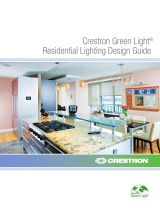3
6
2
5
Dimmer Switch
These dimmers comply with both
BS EN 60669-2-1 & BS EN 55015
P
lease keep this leaflet for future reference
4
SAFETY INSTRUCTIONS
• This product must be installed by a competent person in
accordance with the current editions of the IEE Wiring
Regulations (BS7671) and Buildings Regulations. If in any
doubt, consult a qualified electrician.
• To prevent electrocution, do not work on any appliance live.
Turn off mains electricity supply before commencing work.
• If this product has a metal front plate it
must be earthed.
• To prevent fire hazard do not exceed the related load
specified for the product.
• The minimum box depth required for the Logic Plus
dimmers when using the supplied pattress, is 16mm.
Without the pattress and for all dimmers with metal front
plates, the minimum depth is 25mm.
• Dimmer switches must not be used in bathrooms,
washrooms or any location subject to splashes of water
condensation or dampness.
• Product and packaging should be disposed of via standard
refuse facilities at the end of their life.
44158 PL Ed. 2
GENERAL INSTALLATION INFORMATION
•
Dimmers are available with one or two gang modules,
w
hich means it is possible to have one or two individual
dimmer modules on the same front plate.
•
The control knob(s) turn on the mains, as well as adjust the
light setting. Some dimmers work on a push on/push off
action, others have rotary switches, which work on the
knob(s) being turned from the minimum (anti-clockwise)
end of the rotational movement in a clockwise direction.
• Once the mains has been switched on, rotation of the
knob(s) will vary the light setting.
• The terms one-way and two-way switching refer to the
mode of switching required in an installation.
• Dimmers with rotary switches can be used for one-way
switching only and are used in installations that require just
one switch to control a circuit. (i.e. one light that is either
on or off.)
See Figure 1.
• The push on/push off type of dimmers can be used for two-
way switching and are applied to installations where a
circuit is often controlled by two switches, e.g. controlling
a light circuit from two switches located some distance
apart, one switch at one end of the room and an additional
switch at the other.
In a two-way installation, as shown in
figure 2, only one
dimmer must be used. A standard 2-way switch must be
u
sed for the other position.
•
With the push on/push off type of dimmer, as long as the
rotary control knob is not turned, when it is pressed, the
d
immer will switch on at the previously set light level. This
is also true in the two-way set up described above and
shown in
Figure 2, even when operated by the remote
switch.
• To avoid damage to the dimmer, do not operate outside its
maximum and minimum wattage limits. These limits are
given on the rear of the dimmer, on the packaging and in
the Specification section below.
• A thermal cutout is incorporated in each dimmer, which will
switch off in the event of an overload.
• If this happens, the overload must be removed or once the
cutout has cooled, the lights will come on again. The lights
will continue to go on and off in this way until the overload
is removed.
• The dimmers should not be installed where an ambient
temperature is outside the 0ºC & 40ºC limits.
•
NOTE: It is normal for the front of the dimmer to become
quite warm in use, the temperature reached being
dependent upon the lamp load and the ambient
temperature.
SPECIFICATIONS
Nominal mains supply voltage ................. 230 volts
Max. acceptable mains fluctuation........... 216 to 253 volts a.c.
Mains supply frequency............................ 50Hz ± 3Hz
Ambient temperature range .................... 0°C to 40°C
USE WITH FUSED GLS TUNGSTEN FILAMENT LAMPS TO
BS EN60064, RA
TED AT 230/240 VOLTS ONLY.
NOT FOR USE WITH LOW VOL
T
AGE OR ENERGY SA
VING/
FLUORESCENT LIGHTING.
UNDER NO CIRCUMSTANCES EXCEED THE MINIMUM /
MAXIMUM RATINGS GIVEN IN THE CHART SHOWN ON
P
AGE 5.
1-gang Single 40 250
1-gang Double 40 250
2-gang
T
riple 40 250
1-gang Single 65 450
1-gang
Single
75
500
2-gang Double 65 450
On front plates mounting multiple dimmers, the
minimum/maximum wattage ratings given are for each dimmer.
INSTALLING THE DIMMER IN A ONE-WAY SITUATION
1.
Please be sure that the general installation information is
fully understood before attempting to install the new
dimmer. Also be sure that the load it is intended to control
is within the specification of the dimmer.
2. Please note; the colour codes used in the UK prior to April
2004 are as follows: -
Live = RED Neutral = BLACK
In all other ar
eas of the EU, as well as new build installations
in the UK after April 2004, the colour codes used ar
e: -
Live =
BROWN
Neutral =
BLUE
The first colour indicated in the following text will be that used
prior to April 2004. The second colour, shown in brackets, is
the colour used after April 2004.
3. Some products have the fixing screws clipped to the rear of
the product. These should be unclipped before installing
the pr
oduct.
4. Ensure the mounting box is firmly fixed to the wall.
5. If replacing an existing dimmer or switch, always take
careful note of the cables and terminal descriptions before
Size of
front plate
Number of
dimmers
mounted on
plate
Min.
W
attage
Max.
Wattage
Power/Load rating
With GLS lamps





